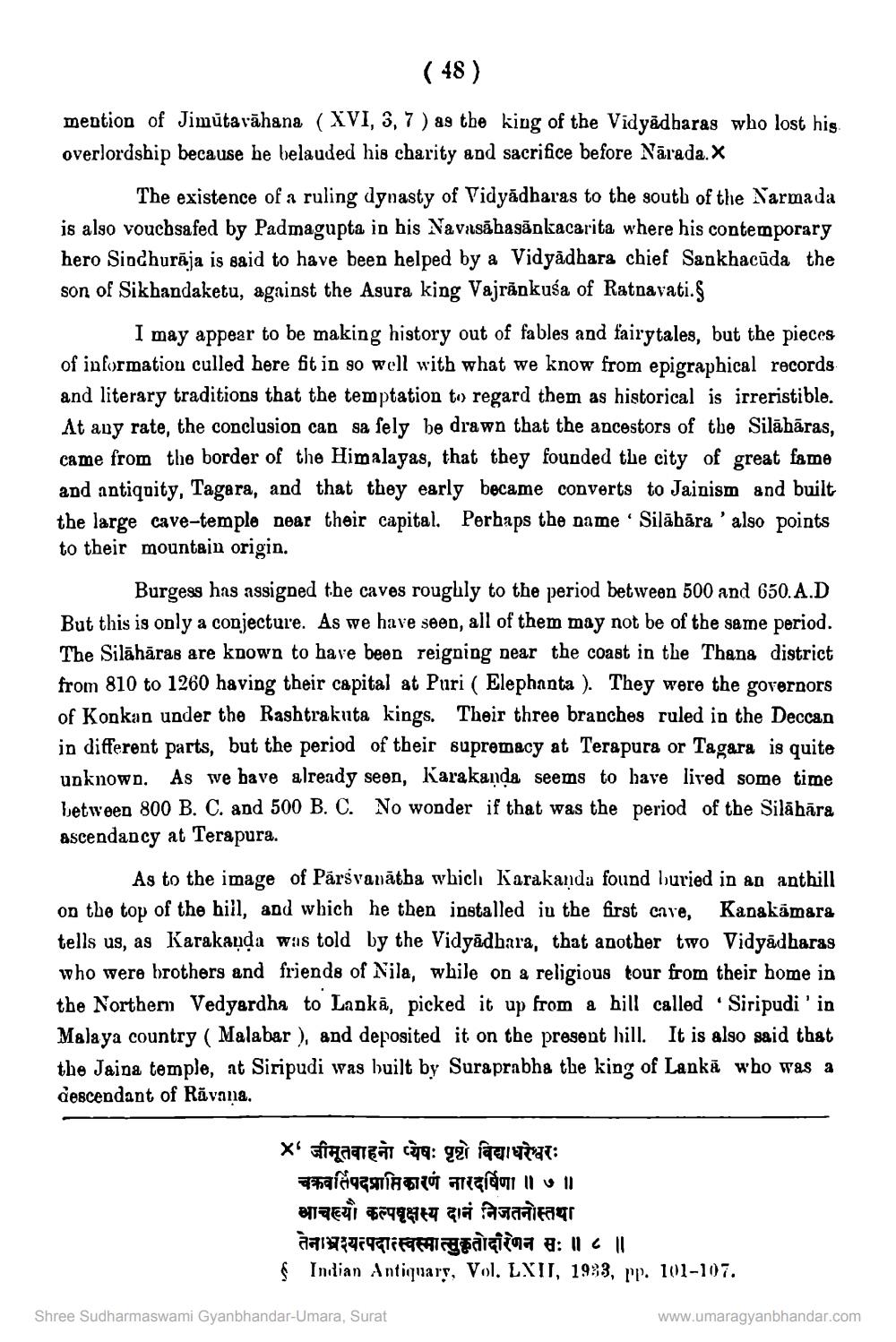________________
( 48 ) mention of Jimūtavāhana (XVI, 3, 7 ) as the king of the Vidyādbaras who lost hig. overlordship because he belauded his charity and sacrifice before Nārada.X
The existence of a ruling dynasty of Vidyādbaras to the south of the Narmada is also voucbsafed by Padmagupta in his Navasāhasānkacarita where his contemporary hero Siodhurāja is said to have been helped by a Vidyadhara chief Sankhacūda the son of Sikhandaketu, against the Asura king Vajrănkuša of Ratnavati.
I may appear to be making history out of fables and fairytales, but the pieces of information culled here fit in so well with what we know from epigraphical records and literary traditions that the temptation to regard them as historical is irreristible. At any rate, the conclusion can sa sely be drawn that the ancestors of the Silābāras, came from the border of the Himalayas, that they founded the city of great fame and antiquity, Tagara, and that they early became converts to Jainism and built the large cave-temple near their capital. Perhaps the name . Silābāra 'also points to their mountain origin.
Burgess has assigned the caves roughly to the period between 500 and 650. A.D But this is only a conjecture. As we have seen, all of them may not be of the same period. The Silāhāras are known to have been reigning near the coast in the Thana district from 810 to 1260 having their capital at Puri ( Elephanta ). They were the governors of Konkan under the Rashtrakuta kings. Their three branches ruled in the Deccan in different parts, but the period of their supremacy at Terapura or Tagara is quite unknown. As we bave already seen, Karakanda seems to have lived some time between 800 B. C. and 500 B. C. No wonder if that was the period of the Silābāra ascendancy at Terapura.
As to the image of Pārsvavātba whiclı Karakanda found buried in an anthill on the top of the hill, and which he then installed in the first cave, Kanakāmara tells us, as Karakanda was told by the Vidyādbara, that another two Vidyādharas who were brothers and friends of Nila, while on a religious tour from their home in the Northem Vedyardha to Lapkā, picked it up from a bill called Siripudi' in Malaya country ( Malabar ), and deposited it on the present hill. It is also said that the Jaina temple, at Siripudi was built by Suraprabha the king of Lankā who was a descendant of Răvana.
X' sfinarea cà gai agitat:
चक्रवर्तिपदप्राप्तिकारणं नारदर्षिणा ॥ ७ ॥ वाचल्यो कल्पवृक्षस्य दानं निजतनोस्तथा तेनाभ्रश्यत्पदात्स्वस्मात्सुकृतोदारेगन सः ॥ ८ ॥ Ś Indian Antiquars, Vol. LXII, 1933, pr. 101-107.
Shree Sudharmaswami Gyanbhandar-Umara, Surat
www.umaragyanbhandar.com




